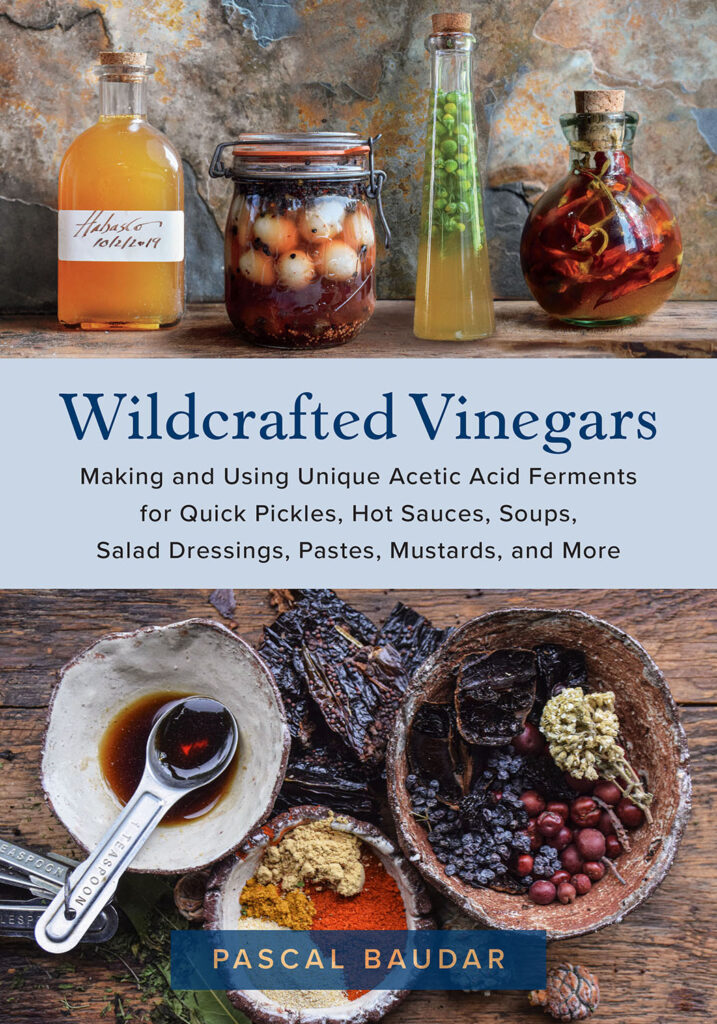
By Pascal Baudar
Chelsea Green Publishing, 2022
289 pages, paperback, $34.95
If you are a foodie, a fermentista or a gardener passionate about flavor, “Wildcrafted Vinegars” may be your next savory adventure. In his third book on fermentation (“The Wildcrafting Brewer” covers yeast fermentations and “Wildcrafted Fermentation” covers lactic acid ferments), Pascal Baudar takes us through the steps of making vinegar and flavoring it. His instructions are very clear. His photography is masterful. His flavor pairings excite curiosity and inspire a wander in the woods.
Formerly based in Los Angeles, Baudar reminds me of Euell Gibbons crossed with Sandor Katz, as he writes of foraging urban wild edibles often considered invasive weeds and using them to ferment and flavor vinegars or as foods to marinate in, or sprinkle with, vinegars. The wild mustards that color the hills, dandelion, nettles, chickweed, watercress, pine needles and even tree barks enliven his recipes. His message is environmental and culinary. Learn about and use the invasives, gather the wild foods respectfully, and support your farmers’ market as a way of helping the planet. Create a pantry of intriguing plant-flavored vinegars to add even more healthy vibrance to your table.
The book is a true choose your own adventure just like a meandering through a field and gathering strategies and ingredients. Baudar gives the reader three levels of vinegar making. One can make wine from scratch and introduce a vinegar mother (sourcing and creating a vinegar culture is covered). One can start with a delicious wine or juice and turn it into vinegar and flavor it. Or one can purchase live vinegar and flavor it. But within each approach are multitudes of side ventures in the form of varying approaches to acetic fermentation.
Over 100 recipes show how to use homemade vinegars in making a wide array of dishes from soups to salads to desserts and jam. Recipes include smoked mushroom and seaweed vinegar, pine-, fir- and spruce-infused vinegars, pickled unripe walnuts, pickled mustard leaves, raw hot sauce, mountain oxymel, and sow thistle capers.
Baudar does give guidelines for responsible wild gathering and for safe food production, as well as caring for your mother. Once you have mastered the basic methods of making and aging vinegars, you can experiment with the flavors available in your side yard, forest, fields, gardens, and at the farmers’ market.
Roberta Bailey, Seven Tree Farm, Vassalboro, Maine
